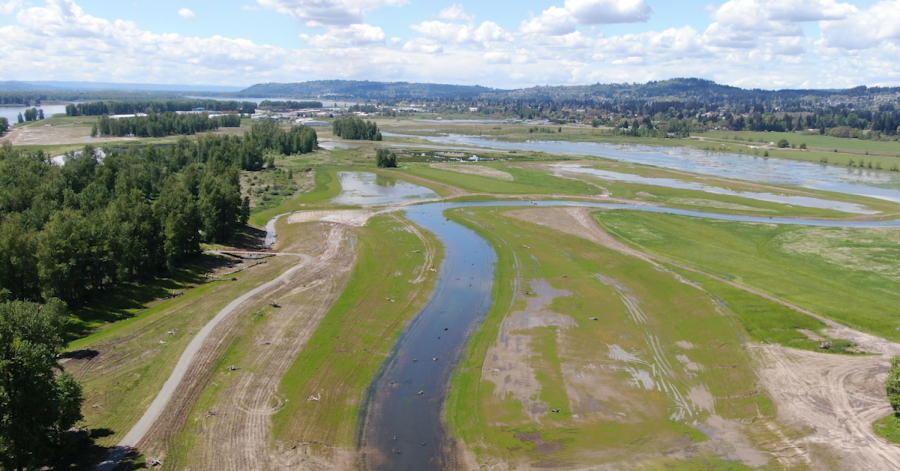When is a wetlands refuge not really a wetlands refuge?
When someone plunks an impenetrable levee between its two primary sources of water.
That’s been the case at the Steigerwald Lake National Wildlife Refuge near Washougal, Wash. In the 1960s, the U.S. Army Corps of Engineers built a massive levee that prevented flooding in the city, but also separated the Columbia River from Gibbons Creek and much of a natural floodplain.
For the past two years a coalition of more than 15 partners and funders, spearheaded by the Lower Columbia Estuary Project, has worked to remove the levee (restoring free passage for salmon) and re-plant a native riparian forest.
It’s the largest habitat restoration project ever completed on the Lower Columbia River.
After a near two-year closure, the refuge re-opened to the public on May 1 with a bonus for visitors—an additional 160 acres and 1.1 miles of hiking trails.
Captured by Deborah Bloom in the video above, the results of the collective effort are spectacular.



